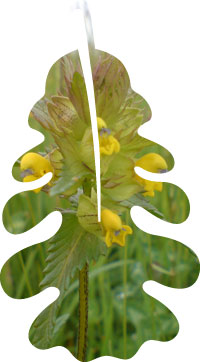Meadow Management

Traditional species-rich hay meadows have become rare sights in the British countryside where once they were common place with wild flowers such as corn flower, corn cockle, oxeye daisy and orchid species. They supported an abundance of insects, birds, and mammals which are no longer seen in as greater numbers and have in many cases become rare. Changes in farming practices have altered the way many grasslands have been managed over the years and ultimately have changed the range of grasses and wild flowers that we are used to seeing.

In 2007 when we took on the tenancy of the field the aim we decided on was to manage the central block as traditional hay meadow, restoring it to species-rich grassland over time. The grassland showed potential with plants such as meadow vetchling, grass vetchling, and common cat's ear being found when it was surveyed by Gwent Wildlife Trust linking in with the Gwent Grassland Initiative. Through linking with Gwent Wildlife Trust, we have become a receptor site for locally harvested wildflower seed which is helping us to improve the seed bank and ultimately assist us with restoring the grassland. We have already started seeing the benefits of the change in management and in particular the wildflower seed, as this year we have started seeing yellow rattle coming in. Yellow rattle is of particular significance for the restoration of the meadow as it is a semi parasitic plant that feeds off the root systems of grasses which helps to create the right environment for wild flowers to flourish again.
The management regime we have adopted involves taking a late cut of hay, combined with a low intensity of grazing by sheep from one of the neighboring small holdings. The hay is cut late to allow the wildflowers to set their seed and the regime over time will reduce the fertility of the soil creating the right environment for the wild flowers to flourish again. This in turn will benefit the insects, birds and mammals which thrive in meadows. While the basics are covered by the late cut and grazing there are still other things that need to be done. The dock and hogweed is being spot treated with herbicide to prevent the grassland from becoming rank and also to ensure we take a good palatable hay crop off the field.
About Us |
News |
Sacrificial Crops |
Meadow Management |
Wildlife Gallery
Seasonal Journal |
Owl Boxes |
Future Plans |
Contact Us

